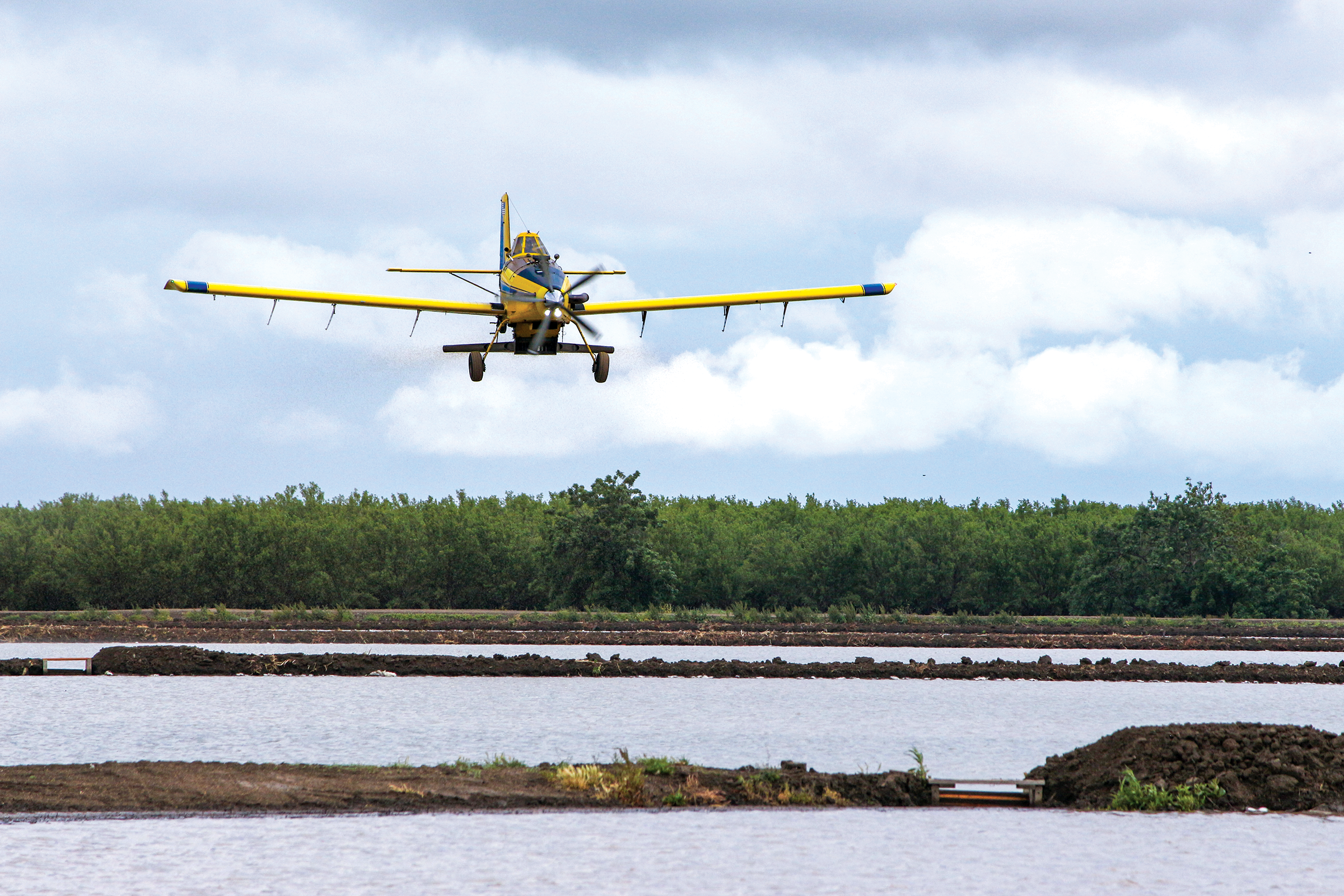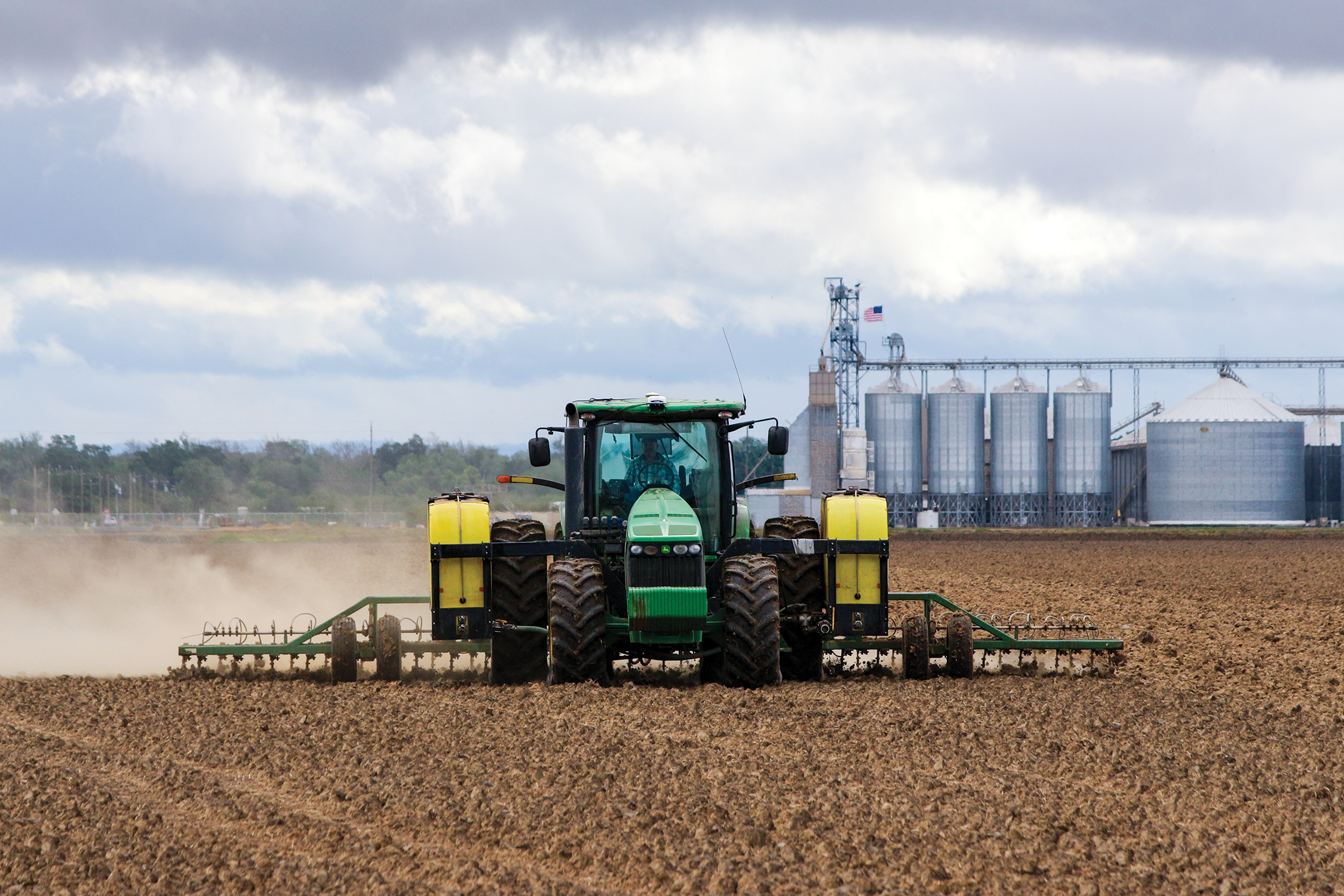Wet year allows more rice to be planted

Anderson’s Flying Service seeds a rice field at Montna Farms in Sutter County. California rice farmers expect to sow most of their acreage, unlike 2022, when some planted no rice due to drought and reduced water deliveries. They now have full water supplies for planting after 2023 storms.
Photo/Ching Lee


Photo/Ching Lee
By Ching Lee
Thanks to a wet winter and spring, California rice country is humming with activity again, with planes dropping seed on flooded fields and equipment working the ground as planting ramps up in the Sacramento Valley.
It’s a scene that Colusa County grower Bruce Rolen says he views with elation, considering he planted not one grain of rice a year ago. At the height of the state’s multiyear drought, reduced water deliveries to farms last season left “fallow fields that were just growing tumbleweeds and thistle plants,” he said.
Plentiful rainfall, an enormous snowpack and brimming reservoirs have changed all that, with farmers “just tickled” that they will have enough water to plant their full acreage.
“You’ll find a lot of happy campers this year,” Rolen said. “Everybody’s got a real high step in their walk.”
But the planting season has not been without a few hiccups. More rain this spring kept fields saturated longer, delaying groundwork and planting. Even so, Rolen said he was able to get “a fair amount” of rice planted last month. Ideal planting dates, he said, should fall between April 25 and May 15.
With growers throughout the Sacramento Valley going full throttle, Rolen said he expects more than 90% of the state’s rice ground will get planted this year, or about 470,000 acres. Farmers agree that fields within the Yolo and Sutter bypasses may face flooding as the snow melts, preventing that ground from being planted.
In its prospective plantings report in March, the U.S. Department of Agriculture estimated California rice farmers will sow 404,000 acres in 2023.
That’s a far cry from the 256,000 acres planted in 2022, the lowest since 1958. Farms on the west side of the valley, particularly those in Colusa and Glenn counties that get water from irrigation districts that divert from the Sacramento River, bore most of the economic brunt. Farms in the Glenn-Colusa Irrigation District, for example, planted just 1,000 acres of rice last year when they typically grow about 100,000 acres.
Rolen, who farms in the Glenn-Colusa Irrigation District and who also manages a seed company in Williams, described the trickle-down impacts as “very depressing.” With so little rice planted last year, he estimated the seed company did 5% of its normal business. That meant he couldn’t hire his regular seasonal workers.
Businesses that support the rice-farming infrastructure—including rice mills, dryers, storage facilities, agricultural aviators, trucking companies, and suppliers of fertilizers, chemicals and farm equipment—all took economic hits. The University of California estimated the 2022 season cost the state rice industry more than $703 million in impacts and a loss of 5,400 rice-related jobs.
Tim Johnson, president and CEO of the California Rice Commission, said some of the ancillary businesses are “still living in the harvest that never was and won’t fully recover from drought until the fall” when the 2023 harvest is complete.
“That truly shows that drought is not done, making this a make-or-break season for those connected to rice farms across the region,” he said.
With a lack of work planting rice last year, A.J. Anderson, part owner of Anderson’s Flying Service in Sutter County, said many California agricultural pilots were forced to go on what he calls “the Corn Run”—flying corn and soybeans fields in the Midwest. He noted his father took one of the company’s planes to Iowa for the summer.
“We didn’t make a lot of money last year. We also didn’t spend a lot of money,” Anderson said, noting his company was forced to make “some pretty big cuts” in employment and insurance on trucks.
Because he didn’t hire any seasonal help last year, some of his past employees left the area to find work elsewhere. Now that the company is back to working a full schedule, Anderson said finding new employees has been difficult.
At Montna Farms in Sutter County, Jon Munger, vice president of operations, said cooler weather last week slowed development of just-planted rice. The farm seeded its first field—a short-grain variety—on April 27. Despite the weather disruptions and later start, Munger said they’re typical of spring planting, adding, “we’ll all get through it, and it’ll all work out fine.” He said the farm will “push all the way into the end of May” to get all fields planted.
Last year, Montna Farms planted 44% of its normal acreage, which Munger said was “fortunate,” considering “a lot of our friends on the west side planted zero.”
“It’s great to see the whole valley here getting planted back to rice this year,” he said.
Businesses and surrounding communities that depend on the rice industry are not the only ones that benefit from more rice being planted this year, Munger said. Wildlife such as waterfowl that use rice fields as habitat and as a source for food suffer from a lack of planted rice, he said.
Charley Mathews Jr., a grower in Yuba County, which did not face the severe water cutbacks as the west side of the valley, was able to plant all his acreage last year. He said he expects to do the same this year. Though he did not seed his first field until last Friday, Mathews said modern farming equipment “is so much better than it used to be,” making field work a lot speedier. He said he remains optimistic “it’ll all turn out well.”
Limited supplies of California medium-grain rice have pushed market prices to an all-time high. As of May 1, prices stood at $70-$72 per hundredweight, according to USDA.
Mathews, chairman of Farmers’ Rice Cooperative, which processes and markets about 25% of the state’s rice, said supplies will remain tight until farmers harvest the new crop this fall. This will keep prices up. But with more acreage planted this year, prices will begin to soften.
“But I don’t think it’s to any level that puts us all at risk,” Mathews said. “We’re going to probably adjust back to normal.”
Though prices may trend downward from their record highs, farmer Rolen said he expects they will remain at profitable levels for farmers without driving away price-sensitive buyers.
“(Prices) will be back down to a market level that is sustainable with our long-term trading partners like Japan, South Korea, the Middle East,” he said.
(Ching Lee is an assistant editor of Ag Alert. She may be contacted at clee@cfbf.com.)




